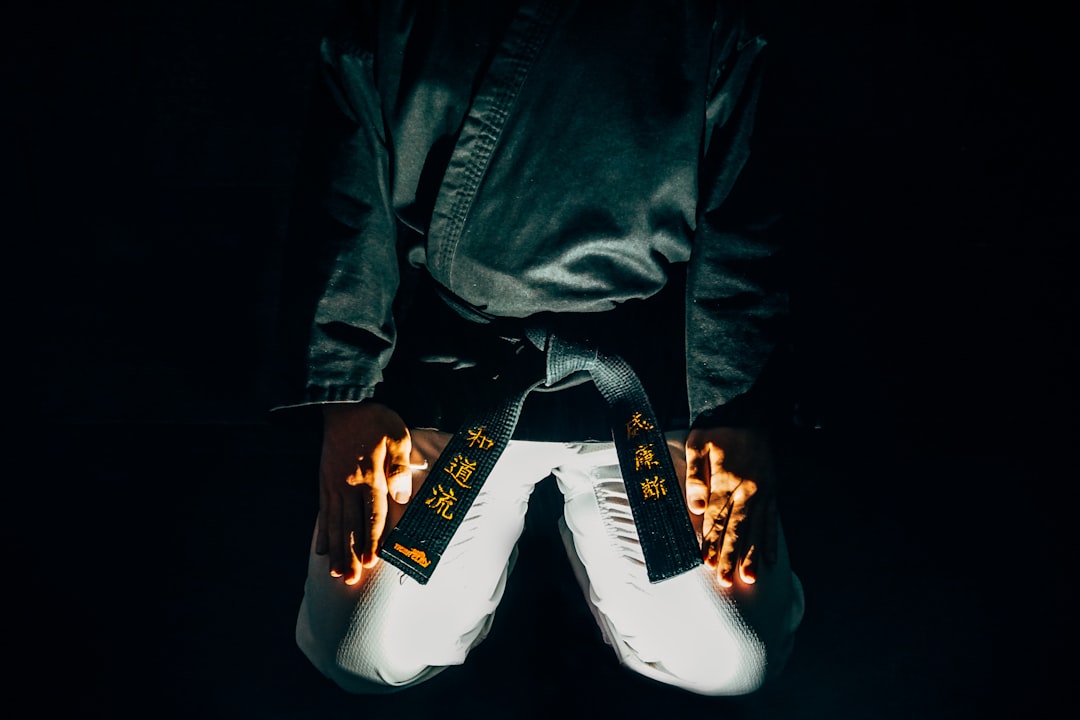The article discusses the cultural and practical significance of the traditional karate garb, known as the 'Karate Gi,' emphasizing its role in supporting the practitioner's movements and symbolizing humility and respect for tradition. It explains that the gi's components—jacket, trousers, and belt—reflect a karateka's progress and dedication. Donating used karate gis is encouraged as a way to support the next generation of martial artists and maintain the integrity of the culture. The text provides guidance on the practical aspects of a gi's design, suggesting cotton or cotton blend fabrics for their durability and breathability. It also advises on how to find local dojos or community centers in need of such donations and the importance of properly maintaining karate gis to ensure their longevity. The article concludes by highlighting that donating karate equipment is a meaningful act that contributes to the sustainability and inclusivity of the karate community, allowing practitioners to pass on their used gis for continued use and supporting those who may not have access to proper training attire. It encourages individuals to consider donating karate equipment as an impactful way to declutter and make a positive difference in the lives of aspiring martial artists.
exploration into the world of martial arts training reveals a pivotal piece of equipment: the karate suit, commonly known as a karate gi. This article demystifies the purpose and significance of a karate gi, dissecting its traditional components and their roles in practice. We’ll navigate how to source and donate quality karate suits for those aspiring to embark on this discipline. Additionally, we provide essential tips for maintaining your gi to ensure longevity and performance. Join us as we delve into the importance of the karate gi within the martial arts community.
- Understanding Karate Gear: The Significance of a Karate Gi
- The Anatomy of a Traditional Karate Gi: Fabric, Fit, and Function
- Sourcing and Donating Quality Karate Suits for Aspiring Martial Artists
- Tips for Maintaining and Extending the Life of Your Karate Gi
Understanding Karate Gear: The Significance of a Karate Gi

When engaging in the discipline of karate, practitioners don a garment known as a ‘Karate Gi,’ which is central to the practice. This traditional uniform not only facilitates the necessary range of motion for various techniques but also embodies the martial artist’s humility and respect for tradition. The gi typically consists of a jacket, trousers, and a belt, each with significance in reflecting the wearer’s progress and dedication within the art. For those looking to support the next generation of karateka or contribute to the preservation of martial arts culture, donating karate equipment such as gis can make a difference. Do you have old or unused karate gis gathering dust in your closet? Consider donating them to local dojos or community centers where they are often in need. Not only does this help individuals who may not be able to afford their own gear, but it also ensures that the tradition continues with respect for those who have come before.
In terms of material and cut, a karate gi is designed to be both durable and comfortable, allowing for unimpeded movement during practice or competition. The fabric, usually cotton or a cotton blend, is both breathable and sturdy, enduring the rigors of training while maintaining its form. If you are in possession of well-maintained karate gis that you no longer use, where can you donate karate equipment? Look for local martial arts schools or organizations that accept donations. They often welcome such contributions to provide for their students or to offer to newcomers who are just beginning their journey in karate. By doing so, not only are you decluttering your space but also contributing to the sustainability and inclusivity of the martial arts community.
The Anatomy of a Traditional Karate Gi: Fabric, Fit, and Function

When discussing the attire of a karate practitioner, one immediately thinks of the traditional Karate Gi. This garment is emblematic of discipline and respect within the martial arts community. The Gi itself is constructed from cotton or hemp fabric, which provides both durability for the rigors of practice and comfort for the wearer. Its simple design, consisting of a jacket, trousers, and belt, allows for ease of movement and reflection on the purity of martial arts principles. The top, known as the “juban,” is designed to be worn outside the jacket, protecting the Gi beneath from perspiration and wear.
The fit of a Karate Gi is tailored to facilitate mobility and comfort without being overly baggy or restrictive. It’s typically oversized to accommodate the various belts and ranks that a practitioner may earn over time. The function of the Gi extends beyond mere clothing; it serves as a canvas for displaying one’s rank through the color and placement of the belt, known as an “obi.” The trousers, or “hakama,” in some styles, are wide-legged and fall just above the ankles, offering freedom of leg movement. While practicing, the Gi absorbs the moisture produced by the practitioner, making it a functional piece of equipment during intense training sessions. For those looking to contribute to the martial arts community or in need of a new Gi themselves, consider donating old karate equipment that is still in good condition to schools or individuals who may benefit from them. Are you curious about where to donate your used Karate Gi? Many martial arts dojos accept such donations, and they are often greatly appreciated. Do they offer a chance to give back to the community and ensure your former training attire finds a new, meaningful use.
Sourcing and Donating Quality Karate Suits for Aspiring Martial Artists

When outfitting aspiring martial artists, the importance of quality karate suits cannot be overstated. These garments are pivotal in ensuring that practitioners can perform techniques comfortably and safely, without restrictions or distractions from ill-fitting attire. Sourcing such equipment involves a commitment to finding apparel that meets the highest standards of durability, flexibility, and functionality. It’s crucial to consider materials that offer both breathability and protection, as well as designs that allow for full range of motion.
For those looking to support budding martial artists but unsure how to proceed, donating karate equipment can be an impactful way to contribute. Organizations that collect and distribute these suits play a vital role in making martial arts more accessible to individuals who may not have the means to afford proper attire. By donating gently used or new karate suits, you provide aspiring martial artists with the tools they need to practice their craft. Where can one find reputable organizations that accept donations of karate equipment? Look for non-profits or community centers dedicated to promoting martial arts and inquire about their equipment needs. How do these organizations ensure that the suits reach those who will benefit most from them? They typically have established networks and partnerships with local dojos and schools, ensuring a direct impact on the recipients. Through such donations, you not only help individuals pursue their martial arts journey but also support the growth and development of the sport within the community.
Tips for Maintaining and Extending the Life of Your Karate Gi

When it comes to maintaining your karate gi, also known as a judogi, its longevity largely depends on how well you care for it. To ensure your gi remains in top condition and lasts through many belt levels and training sessions, consider these key tips: Firstly, always wash your gi after each use, especially if you’ve trained intensely or sweat profusely. The salt from perspiration can damage the fabric over time. Use a gentle detergent designed for delicate fabrics to avoid shrinkage and maintain the shape and color of your gi. Secondly, air-dry your karate gi instead of machine drying it. This prevents the material from losing its integrity due to heat stress and prolongs its lifespan. Additionally, regular inspections can help you catch signs of wear and tear early on. If you notice any significant damage or if the gi is beyond repair, it might be time to consider donating your equipment to a fellow practitioner or a dojo in need. This not only keeps the gi out of landfills but also supports the martial arts community. Are your karate gi’s days numbered? If you’ve noticed frayed seams, stains that won’t come out, or other signs of wear, it’s time to think about parting with your current gi. But remember, when your gi can no longer serve you on the mat, it can still be a valuable resource for others starting their martial arts journey.
In conclusion, a karate suit, or more accurately referred to as a karate gi, is an integral part of the martial art’s practice and tradition. It serves not just as a garment but as a symbol of respect for the discipline and its history. Whether one is sourcing their own or donating karate equipment to those in need, understanding the anatomy of a traditional karate gi—its fabric, fit, and function—is crucial for optimal performance and longevity. Proper care and maintenance ensure that the gi remains a reliable companion through the many belts and milestones of one’s martial arts journey. For those looking to contribute to the sport, donating karate equipment can support aspiring martial artists and enrich the community, fostering growth and opportunity for all.
